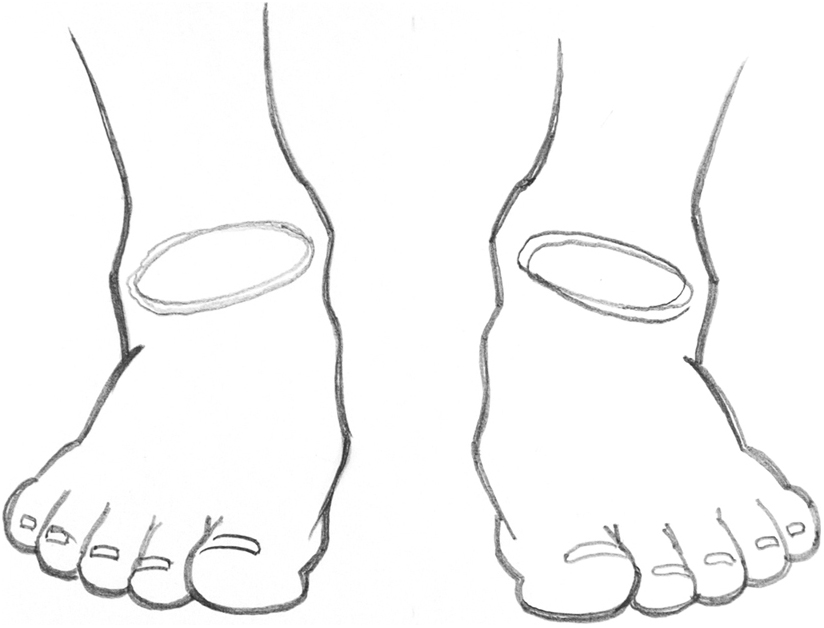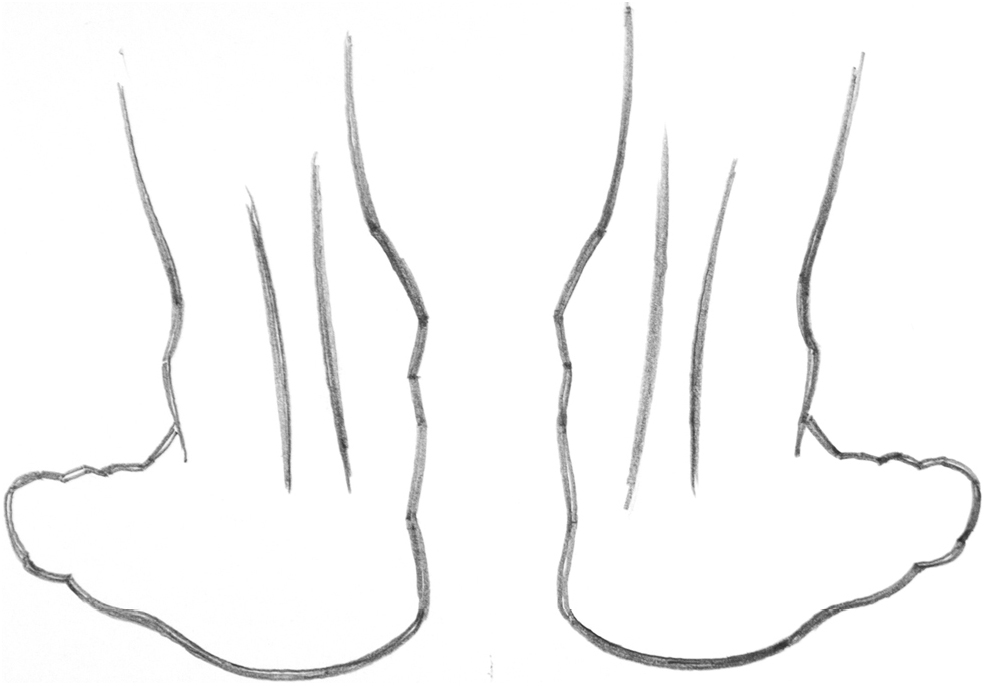
With no easy geometric patterns visible, feet are challenging to draw. This part of the body has little fat or muscle, which causes the outer form to be determined by the bones and tendons. The structure of the feet is similar to the hands, only elongated. The bones of the toes, like fingers, are proportionally reduced in size as they go outward.

The length of the foot is slightly longer than the height of the head and considerably longer than the length of the hand.


The most dominant feature of the ankles is the knobs that protrude from the sides. The knobs are the ends of the leg bones, which meet the bones of the ankles (drawn as ovals) and allow movement of the foot. Notice that these knobs are not straight across from each other, but angled. When viewed from the back, another feature of the ankle is the vertical tendons that connect the heel bones to the lower leg muscles.


The toes, ball of the foot, arch and heel are all aspects of the foot to observe when you are studying how to draw the foot. Does the foot that you are studying have an arch, and can this arch be seen on the outside of the foot?